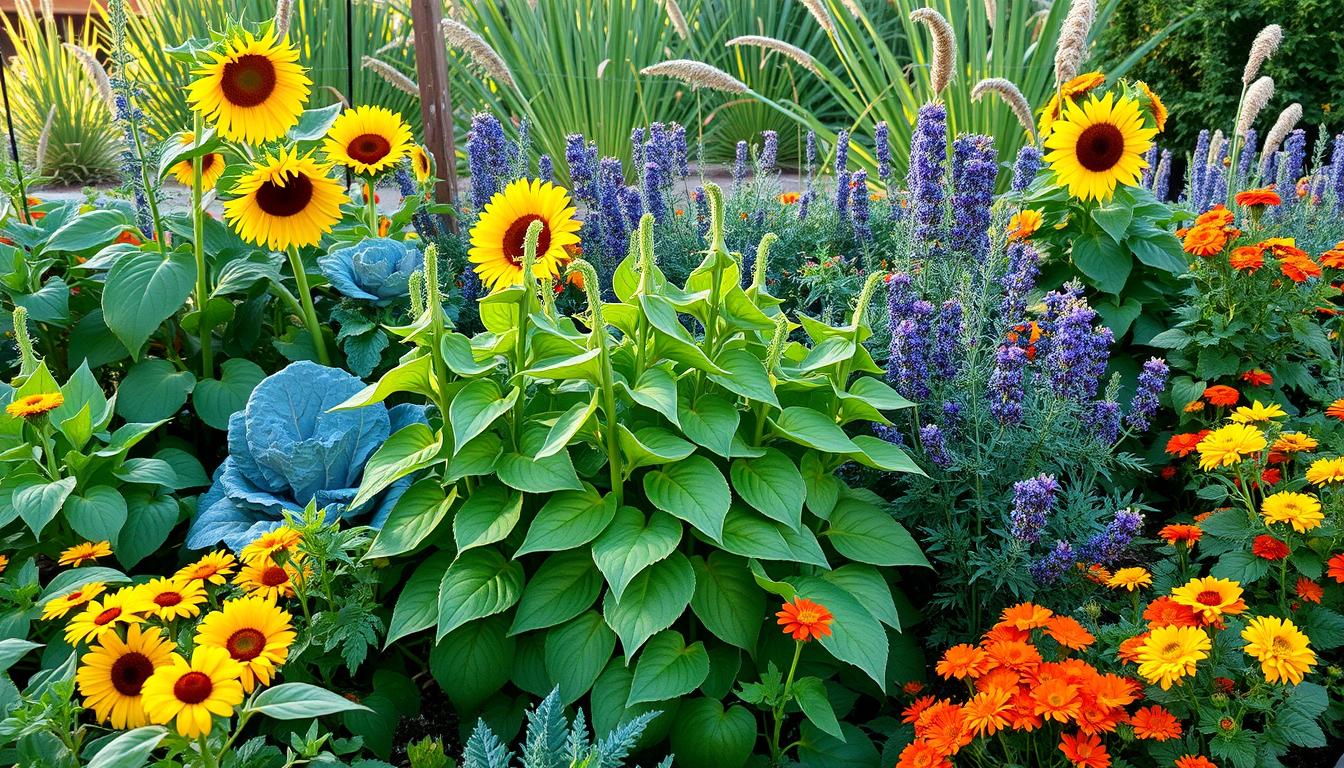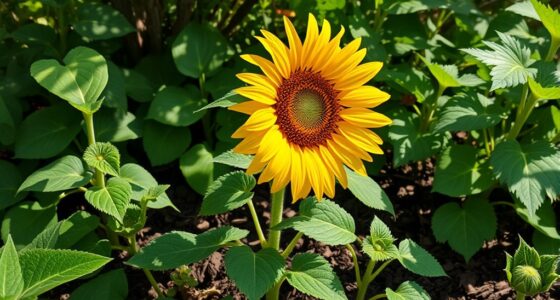Growing bush beans can be one of the most rewarding experiences you embark on in your garden. With their vibrant greenery and the promise of a bountiful harvest, they invite you to connect with nature in a profoundly fulfilling way. Yet, did you know that the secret to a thriving bush bean crop lies not just in the beans themselves, but in the company they keep? By learning about bush beans companion plants, you can significantly enhance your garden’s productivity. From sturdy corn to aromatic basil, each companion brings unique benefits that promote healthier growth and protect against pests. In this guide, you’ll discover some of the best companion plants for bush beans and how to harness their synergy for a flourishing garden.
Key Takeaways
- Bush beans thrive best when paired with compatible plants.
- Understanding companion planting principles enhances your garden’s health.
- Many common garden plants, like corn and basil, support bush beans effectively.
- Good companions can deter pests and improve overall yield.
- Implementing companion planting strategies is easy and rewarding.
Understanding Bush Beans and Their Needs
To cultivate a successful garden, grasping the needs of bush beans becomes essential. These legumes thrive with the right conditions, which can be enhanced through companion planting. Utilizing a companion planting guide for bush beans can support your efforts in achieving optimal growth and productivity.
Importance of Companion Planting
Companion planting serves as a beneficial strategy to foster a robust garden ecosystem. By positioning certain plants together, you can promote natural pest deterrence and improve nutrient uptake. This ensures that bush beans receive the necessary support from their neighboring plants, which can lead to healthier crops.
Growth Requirements for Bush Beans
Understanding bush beans growth requirements is crucial for thriving plants. They flourish in well-drained, fertile soil with a slightly acidic to neutral pH of 5.5 to 7.0. Full sun exposure is vital, as bush beans require at least six hours of sunlight daily. Consistent moisture also plays a significant role in their development. Adequate care and informed planting decisions will create an ideal environment for these beans.

Best Companion Plants for Bush Beans
Engaging with the right companions can transform your bush bean harvest. When considering recommended companion plants for bush beans, a few key options stand out that foster growth and health among the garden’s residents. Below, discover some effective bush beans companion plant pairings that can enhance your gardening experience.
Friendly Friend: Corn
Corn serves as an excellent companion for bush beans. As a tall plant, it provides shade which helps in preventing overheating while offering stability to climbing bean varieties. This relationship works symbiotically, with corn benefiting from the nitrogen produced by bush beans. Together, they create a thriving environment in your vegetable patch.
Protecting Peppers: Bell Peppers
Bell peppers can coexist with bush beans, allowing for efficient use of space. However, their compatibility does vary based on specific growing conditions. When combined, they can maximize garden yield while offering complementary growth. Being mindful of their needs ensures you enjoy a fruitful crop of both.
The Benefit of Basil
Basil is considered another fantastic companion for bush beans. This herb not only enhances the flavor of beans but also acts as a natural pest deterrent. By incorporating basil into your garden, you support bush beans while safeguarding them against common pests, fostering a healthier growing environment.

| Companion Plant | Benefits | Growing Tips |
|---|---|---|
| Corn | Provides shade and acts as a natural trellis | Plant corn in blocks for better pollination |
| Bell Peppers | Maximizes garden yield, complements growth | Ensure proper spacing for good air circulation |
| Basil | Enhances flavor, deters pests | Plant basil near beans for the best results |
Why Companion Planting Matters
Companion planting offers numerous benefits that enhance your gardening experience. By understanding how certain plants work together, you can create a thriving ecosystem that is both productive and resilient. Implementing companion planting tips effectively can lead to impressive results, particularly with bush beans.
Pest Control Advantages
One of the key benefits of companion planting with bush beans is its natural pest control capabilities. Certain plants have been shown to deter harmful insects that threaten your crops. For example, marigolds are known for repelling Mexican bean beetles, a common pest for bean varieties. Planting these vibrant flowers alongside your bush beans not only beautifies your garden but also serves as a practical barrier against pests.
Enhanced Growth and Yield
Utilizing companion planting strategies can significantly enhance the overall growth and yield of your plants. When you plant compatible species together, they can share resources more efficiently. This collaboration allows plants to thrive through improved nutrient uptake and soil health. For instance, the nitrogen-fixing abilities of bush beans benefit surrounding plants, promoting a rich environment for all species involved. You will discover that optimizing these relationships brings forth bountiful harvests.

Optimal Planting Strategies
When considering how to plant bush beans with companions, timing plays a crucial role. Timing not only affects the growth of bush beans but also their companions. Proper planning leads to healthier plants and a more productive garden.
Planting Time for Bush Beans
The most suitable time to plant bush beans is after the last frost of spring. This allows the plants to thrive in warmer soil, which promotes better germination. Keep an eye on local weather forecasts to ensure that the conditions are just right.
Spacing Requirements for Companion Plants
Spacing is vital when implementing bush beans companion planting tips. Adequate space between bush beans, typically 2-4 inches apart, prevents overcrowding, ensuring proper air circulation and minimizing disease risks. Similarly, companion plants should be spaced thoughtfully to avoid sunlight and water competition. This careful planning leads to a flourishing garden with bountiful harvests.
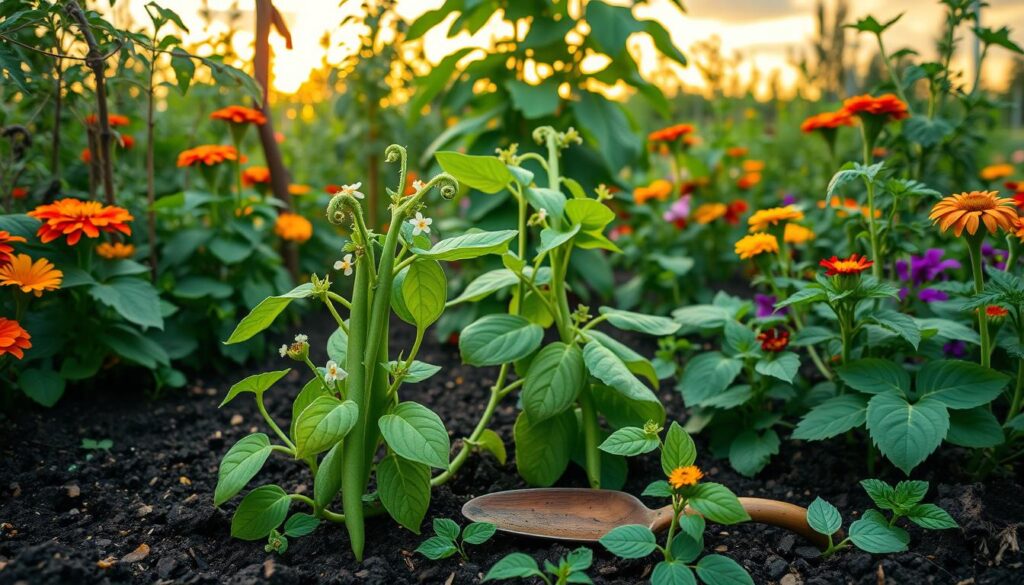
Pairing Bush Beans with Vegetables
When it comes to enhancing your garden’s productivity, knowing how to pair bush beans with vegetables is essential. The right companion plants can significantly improve the growth and health of your bush beans. Two excellent choices for companion planting with bush beans are carrots and radishes, both of which provide unique benefits that can boost your vegetable garden’s success.
Carrots: A Perfect Match
Carrots and bush beans create a symbiotic relationship. Bush beans add nitrogen back into the soil, while carrots, with their deep taproots, help aerate and loosen the earth. This combination allows for improved nutrient uptake and root growth, making them some of the best companion plants for bush beans. As you cultivate both crops together, you can expect a healthier garden and potentially increased yields.
Radishes: Enhancing Soil Health
Another strong pairing involves radishes. Known for their rapid growth, radishes thrive alongside bush beans by suppressing weeds that could otherwise compete for resources. This quick harvest ensures you can achieve maximum efficiency in your garden space. Radishes not only make excellent bush beans companion plants, but they also contribute to the overall soil health, benefiting the other vegetables you grow.
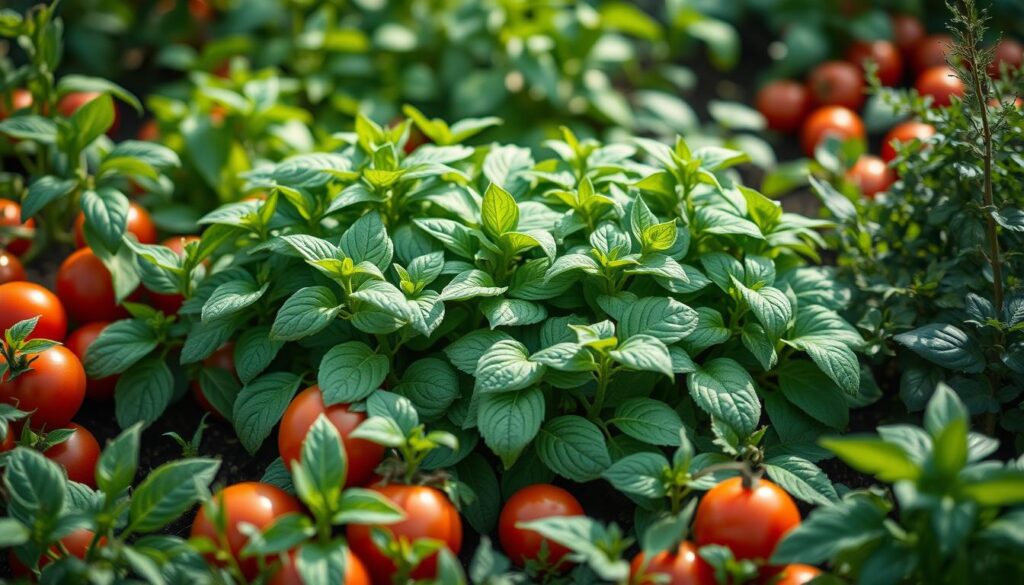
Herbs That Thrive with Bush Beans
Incorporating herbs into your garden can significantly benefit your bush beans. These organic companion plants for bush beans not only enhance flavor but also contribute to pest control and healthier growth. Thyme and oregano stand out as particularly effective herbs that complement bush beans.
Thyme: A Benefit for Both
Thyme serves as a valuable addition to your bush bean garden. This herb attracts beneficial insects while repelling harmful pests. The aromatic properties of thyme create an environment that encourages pollinators, which are essential for healthy plant development. Planting thyme nearby can lead to flourishing bush beans while providing you with fresh herbs for your culinary creations.
Oregano for Aromatic Harmony
Oregano, known for its robust flavor, compliments bush beans beautifully. This herb attracts hoverflies, which help control aphid populations that threaten your crops. Growing oregano close to your beans not only enhances the taste of your dishes but also creates a more resilient gardening ecosystem. You can enjoy the culinary benefits while ensuring your bush beans thrive.
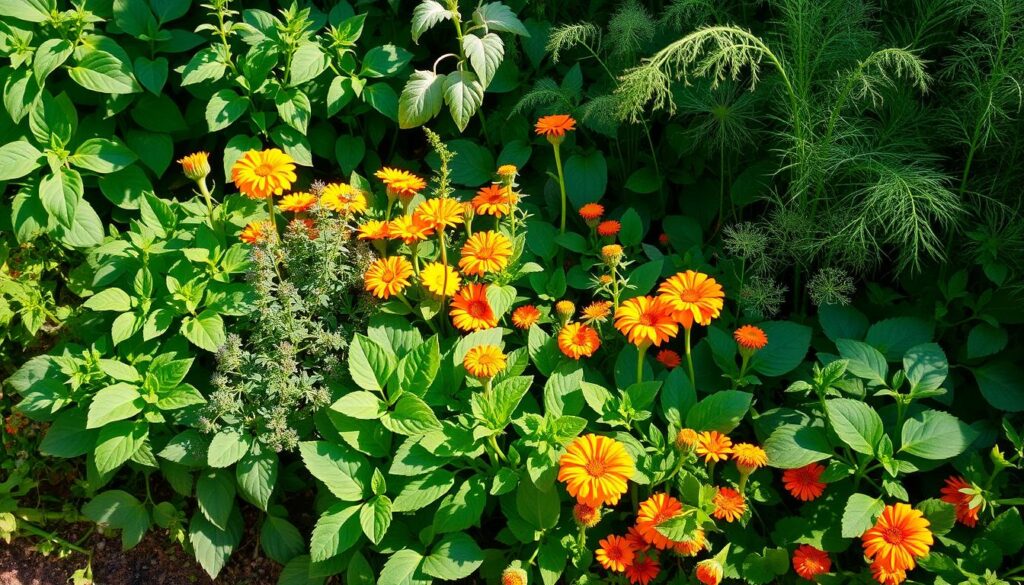
| Herb | Benefits | Ideal Growing Conditions |
|---|---|---|
| Thyme | Attracts beneficial insects, repels pests | Full sun, well-drained soil |
| Oregano | Enhances flavor, attracts hoverflies | Full sun, moderate moisture |
Utilizing these herbs that complement bush beans will make your garden both productive and flavorful. You can cultivate a thriving environment by pairing thyme and oregano with bush beans, leading to a healthy and rewarding gardening experience.
Flowers That Attract Beneficial Insects
Integrating flowers into your garden not only enhances its beauty but also supports the health of your plants, including bush beans. Certain flowers serve as effective companions, attracting beneficial insects that can aid in controlling pests. You will discover how two particular flowers, marigolds and nasturtiums, can benefit your bush beans while acting as companion plants as pest repellers.
Marigolds: Natural Pest Deterrents
Marigolds are celebrated for their ability to repel harmful insects such as Mexican bean beetles. By planting these vibrant flowers, you create a natural barrier around your bush beans. This method reduces the need for chemical pesticides and promotes a healthier growing environment. The presence of marigolds within your garden can significantly enhance the vitality of your bush beans, making them resilient against common garden threats.
Nasturtiums: Edible Flowers and Protectors
Nasturtiums not only add visual appeal to your garden but also serve an important role as trap crops. These flowers attract pests away from your valuable vegetables, including bush beans. With their edible leaves and vibrant blooms, nasturtiums bring both flavor and protection to your garden. By incorporating these flowers that benefit bush beans, you ensure that your companion planting strategy is both productive and pleasing to the eye.
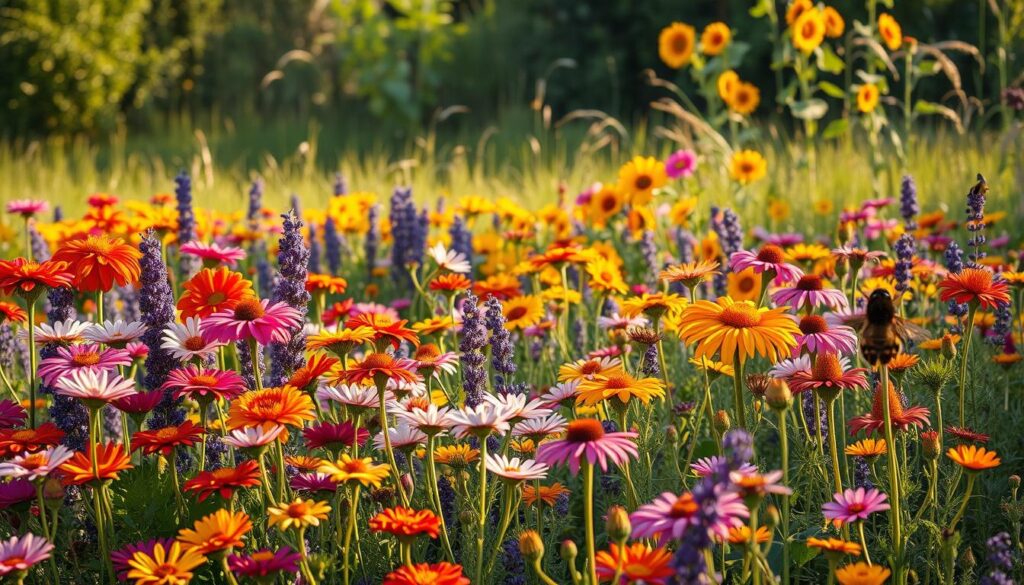
Avoiding Incompatible Plants
When planning your garden, selecting compatible plants can greatly enhance the health and yield of your bush beans. Recognizing incompatible plants for bush beans is equally crucial to avoiding common pitfalls in your gardening journey.
Nightshade Family Conflicts
Many gardeners face challenges with members of the nightshade family, notably tomatoes, potatoes, and eggplants. These plants compete for similar nutrients within the soil, often leading to reduced growth and health in bush beans. Understanding which plants to avoid with bush beans will help alleviate these conflicts and promote a more harmonious garden environment.
How Competition Limits Growth
Beyond the nightshades, other plants such as onions and garlic should be on your list of plants to avoid with bush beans. These alliums release chemicals that hinder the nitrogen-fixing capabilities of the beans, causing further limitations in growth potential. Ensuring you sidestep these incompatible plants for bush beans will help maintain a fruitful and thriving garden.
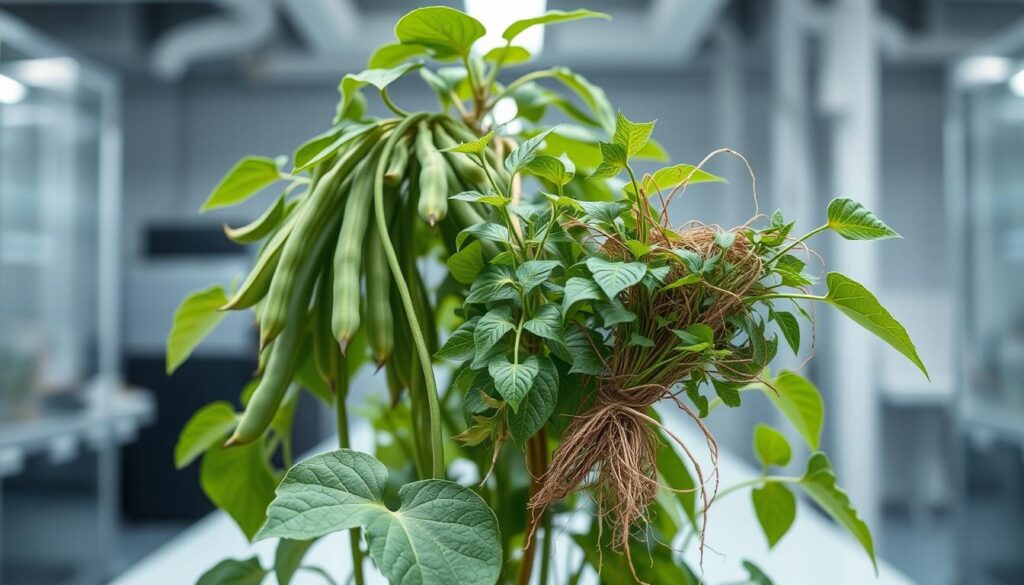
| Incompatible Plants | Reason for Incompatibility |
|---|---|
| Tomatoes | Compete for nutrients and space |
| Eggplants | Same nutrient demand as bush beans |
| Onions | Release substances harmful to beans |
| Garlic | Impairs nitrogen-fixing abilities |
| Potatoes | Compete for water and nutrients |
Soil Considerations for Companion Planting
Understanding the soil needs for bush beans plays a crucial role in successfully growing these beneficial plants. Bush beans thrive in nutrient-rich environments, particularly those with a good balance of nitrogen. By recognizing their specific requirements, you can promote healthy development and increase yields in your garden.
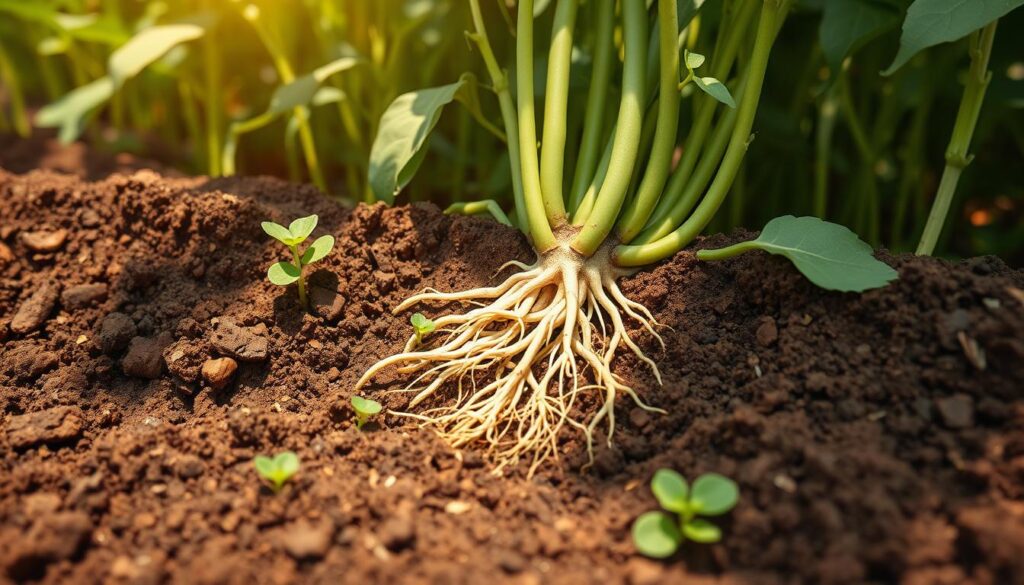
In addition to fulfilling their nutrient requirements, you can significantly enhance soil vitality by improving soil with companion plants. Utilizing legumes such as clover alongside bush beans can boost nitrogen fixing, which enriches the soil structure. This not only benefits the bush beans but also supports the overall health of your growing environment. Regular soil tests will help you monitor nutrient levels and adjust your gardening practices for the best possible outcomes.
Nutrient Requirements for Bush Beans
Bush beans need consistent and adequate supplies of nutrients, especially nitrogen, phosphorus, and potassium. Fulfilling these soil needs for bush beans is essential for promoting vigorous growth during their active season. A well-balanced fertilizer can also support their growth, but natural amendments like compost and well-rotted manure offer additional organic benefits.
Improving Soil Structure Together
Integrating companion plants like clover not only aids nitrogen levels but also enhances soil structure and aeration. This approach leads to healthier root systems and better moisture retention. By pairing bush beans with suitable companions, you foster an environment that promotes plant synergy, leading to mutual benefits and a more productive garden.
Watering Techniques for Companion Gardens
Successful gardening involves understanding the water requirements of both bush beans and their companion plants. Proper watering techniques highly influence plant health and productivity. Maintaining consistent moisture helps prevent stress in bush beans, ensuring they thrive. As you implement companion plant watering tips, consider that different plants have varied moisture needs and will benefit from careful planning and grouping.
Consistent Moisture Levels
Bush beans prefer evenly moist soil. Fluctuations can result in poor growth and lower yields. To maintain consistent moisture, consider using the following methods:
- Regular watering, aiming for about 1 inch per week.
- Mulching to retain soil moisture and reduce evaporation.
- Using soaker hoses or drip irrigation for efficient water delivery.
Companion Plant Water Needs
When watering bush beans, keep in mind the needs of your companion plants. Some may need more moisture than others. To manage watering effectively:
- Group plants with similar water requirements to streamline care.
- Monitor soil moisture levels regularly, ensuring optimal conditions for all plants.
- Adjust your watering schedule based on weather conditions and plant growth stages.

By paying attention to watering bush beans and their companions, you can create a thriving garden ecosystem that supports vibrant growth and bountiful harvests.
Seasonal Companion Planting Changes
Understanding the seasonal changes in planting companions can significantly enhance your gardening success. Each season provides unique opportunities to pair crops effectively. Warm-season crops, such as bush beans, flourish alongside other summer-loving plants, while cool-season companions can set the stage for a robust growing environment ahead of the warmer months. Incorporating crop rotation strategies helps manage soil health and nutrient levels, ensuring a vibrant garden year-round.
Cool vs. Warm-Season Companions
Determining the right companions requires knowledge of their growth preferences. Cool-season companions, like leafy greens and peas, thrive during the spring and fall. In contrast, warm-season crops, such as tomatoes and basil, shine in the summer heat. Pairing these crops effectively maximizes garden productivity and resource use. Below is a comparison of these companions.
| Season | Crop Type | Best Companion Plants |
|---|---|---|
| Cool | Leafy Greens | Radishes, Carrots, Onions |
| Cool | Peas | Spinach, Cabbage, Lettuce |
| Warm | Bush Beans | Corn, Squash, Basil |
| Warm | Tomatoes | Basil, Marigolds, Peppers |
Planning for Crop Rotations
Implementing effective crop rotation strategies promotes healthy soil and reduces pest pressures. By rotating your crops, you can avoid the depletion of nutrients that occurs when the same plants occupy the same space year after year. This method not only enhances soil quality but also encourages a diverse ecosystem in your garden, fostering beneficial microbial activity. Each season provides an opportunity to refresh your soil and maintain a balanced garden environment.

Managing Pests Organically
Organic pest control for bush beans is essential for maintaining healthy plants and promoting a thriving garden ecosystem. By incorporating companion plants into your garden, you can naturally manage pest populations while enhancing growth. Certain plants serve as effective natural repellents, reducing the need for chemical interventions.
Companion Plants as Natural Repellents
Companion plants such as marigolds and geraniums emit fragrances that deter harmful insects, while promoting the overall health of your bush beans. These plants work synergistically, creating a balanced environment where both the beans and their companions can flourish. Using organic pest control methods, you can enjoy a bountiful yield while keeping pests at bay.
Attracting Beneficial Pollinators
Designing your garden to attract beneficial insects plays a crucial role in effective pest management. Flowers like sweet alyssum and dill are excellent for attracting pollinators and predatory insects. These species help maintain pest populations in check, ensuring your bush beans thrive. By enhancing your garden’s biodiversity, you could witness not only improved pest control but also an increase in the health of your overall garden.
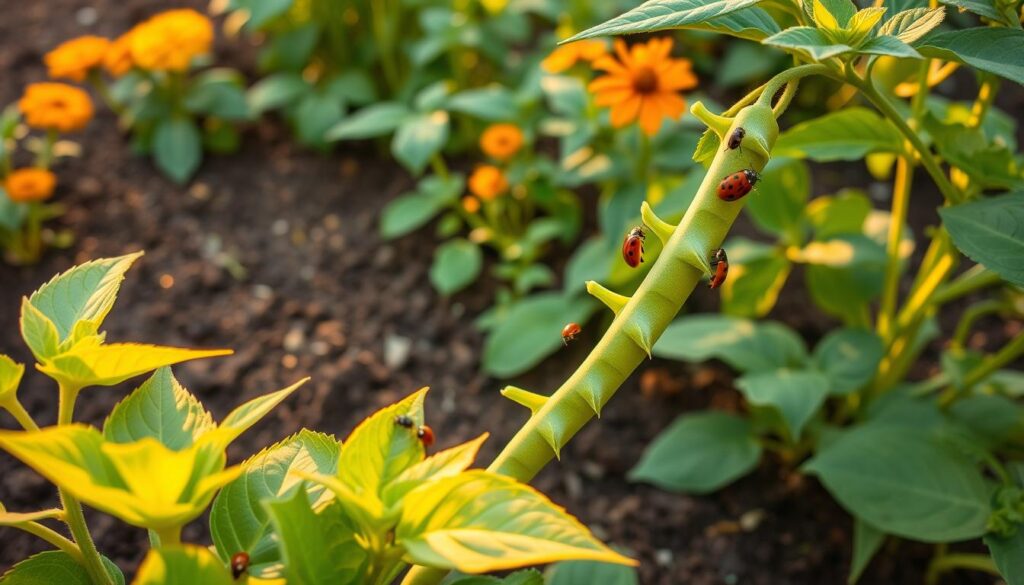
| Companion Plant | Pest Deterrent | Benefits |
|---|---|---|
| Marigold | Whiteflies, nematodes | Enhances soil health, attracts pollinators |
| Dill | Caterpillars, aphids | Attracts beneficial insects, enhances growth |
| Sweet Alyssum | Leafhoppers, thrips | Provides nectar for pollinators, helps with pest control |
Harvesting Bush Beans and Companions
As you approach the harvest season, knowing the right timing for harvesting bush beans can greatly enhance the flavor of your produce. Observing the pods is crucial; aim for a firm and crisp texture as signs of peak ripeness. This will not only ensure maximum flavor but also contribute to better nutrition. Regularly picking the beans promotes continued production throughout the growing cycle, allowing you to enjoy a bountiful yield.
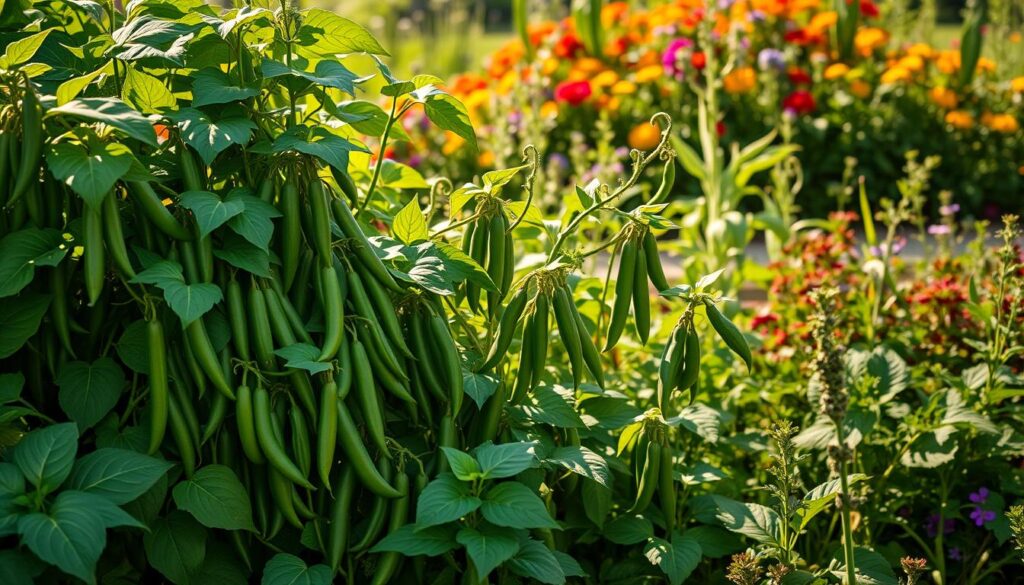
Timing Your Harvest for Maximum Flavor
The best practice for harvesting your bush beans involves monitoring their growth diligently. Keeping track of the days to maturity can guide you in determining the ideal harvest window. Harvest beans early in the day to take advantage of cooler temperatures, which preserves their freshness. Engage your senses—look for shiny, well-formed pods that are filled but not overly mature.
Preserving Your Garden Bounty
After successfully harvesting bush beans, consider preserving companion plants to extend their usability. Various methods exist for preservation, including freezing, canning, and drying. Freezing is ideal for retaining the crispness and flavor of your beans, while canning offers a longer shelf life. Dehydrating herbs can deliver intense flavors for cooking later on. By implementing these techniques, you can savor the fruits of your labor long after the gardening season concludes.
DIY Companion Planting Layouts
Creating effective DIY garden designs for companion planting can enhance your garden’s productivity and health. An organized layout ensures that your bush beans receive the benefits of their companion plants while maximizing available space. You can start by sketching your garden to visualize plant pairings, which helps determine the best arrangements based on growth patterns and sunlight exposure.
Designing Your Garden Plan
When designing your garden plan, focus on the specific needs of each plant. Consider the height, spread, and nutritional requirements of the bush beans and their companions. Grouping compatible plants together fosters a healthier ecosystem both above and below the soil. Think about shading, root competition, and airflow as key factors while arranging your plots.
Visual Aids for Companion Pairings
Utilizing visual aids can simplify the planning process. Companion planting charts and diagrams serve as quick references, providing clarity on what grows well alongside bush beans. These tools enhance your understanding of how different plants support each other, from pest deterrence to nutrient sharing. Incorporating these resources will help streamline your DIY garden designs for companion planting.

Potential Issues in Companion Gardening
Engaging in companion gardening brings numerous benefits, but it can also present common issues with companion planting that may hinder your gardening success. Identifying and addressing these challenges is vital for maintaining a thriving garden. By understanding potential problems and learning effective troubleshooting gardening problems, you can create a more harmonious and productive environment for your plants.
Troubleshooting Common Problems
One prevalent issue in companion gardening arises from pest infestations. Certain plants attract specific insects, leading to an imbalance in your garden ecosystem. Regular monitoring helps you catch pest populations early. Implementing natural pest repellents or introducing beneficial insects can alleviate the situation. Additionally, be mindful of nutrient competition among plants. Some companions may absorb nutrients more rapidly, leaving others deficient. Adjusting planting arrangements or incorporating nutrient-rich fertilizers can counteract this.
Adjusting Garden Plans for Success
Flexibility in your gardening strategies proves essential when dealing with setbacks. If you encounter signs of stress in your plants or notice consistent pest problems, it may be time to reevaluate your companion plant choices. Removing struggling plants and replacing them with more compatible options allows your garden to bounce back. Increased adaptability and continuous observation of your gardening layout can greatly enhance your overall success, helping you avoid common issues with companion planting.
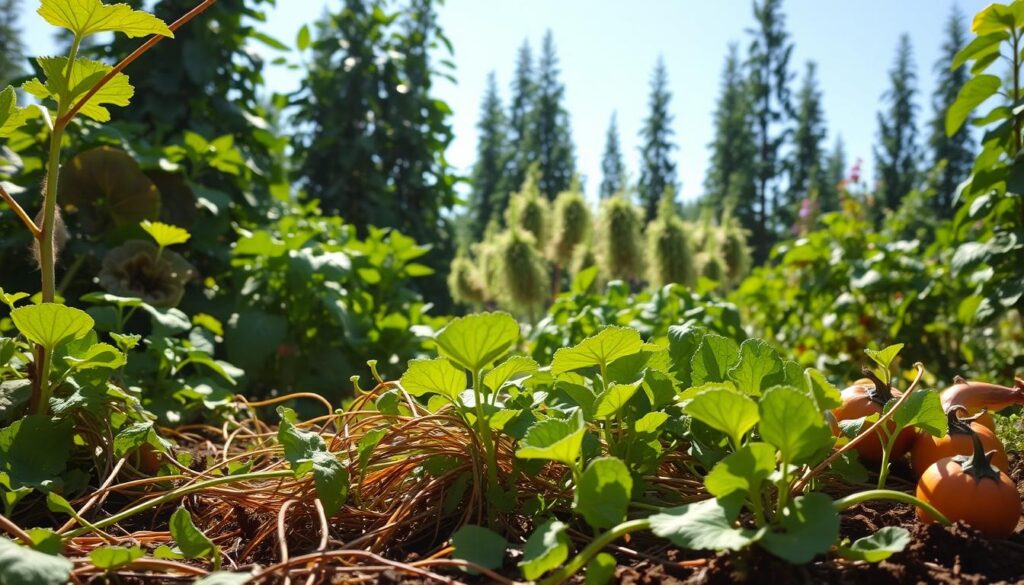
Conclusion: Success with Bush Beans and Companions
As you reflect on your garden experiences, it’s essential to appreciate the journey you’ve undertaken with your bush beans and their companion plants. Each season offers an opportunity to learn more about the unique interactions among plants, fostering an environment for growth and productivity that you can witness firsthand. By carefully selecting companions like corn and basil, you create a thriving garden ecosystem that benefits not only your bush beans but also your overall gardening skills.
Your reflections on companion planting reveal how each plant not only serves a function but also enhances the success with bush beans. Exploring different combinations, observing plant health, and noting pest behaviors can enrich your understanding and enjoyment of gardening. This approach not only provides practical benefits but also forms a deeper connection to your plants and the gardening process.
Ultimately, embracing the advantages of companion planting leads to a more fruitful garden experience. With every harvest, you can savor the flavors and satisfaction that come from your efforts. Keep experimenting and adapting your strategies; soon, you’ll find the perfect balance that promotes both growth and joy in your gardening adventure.
